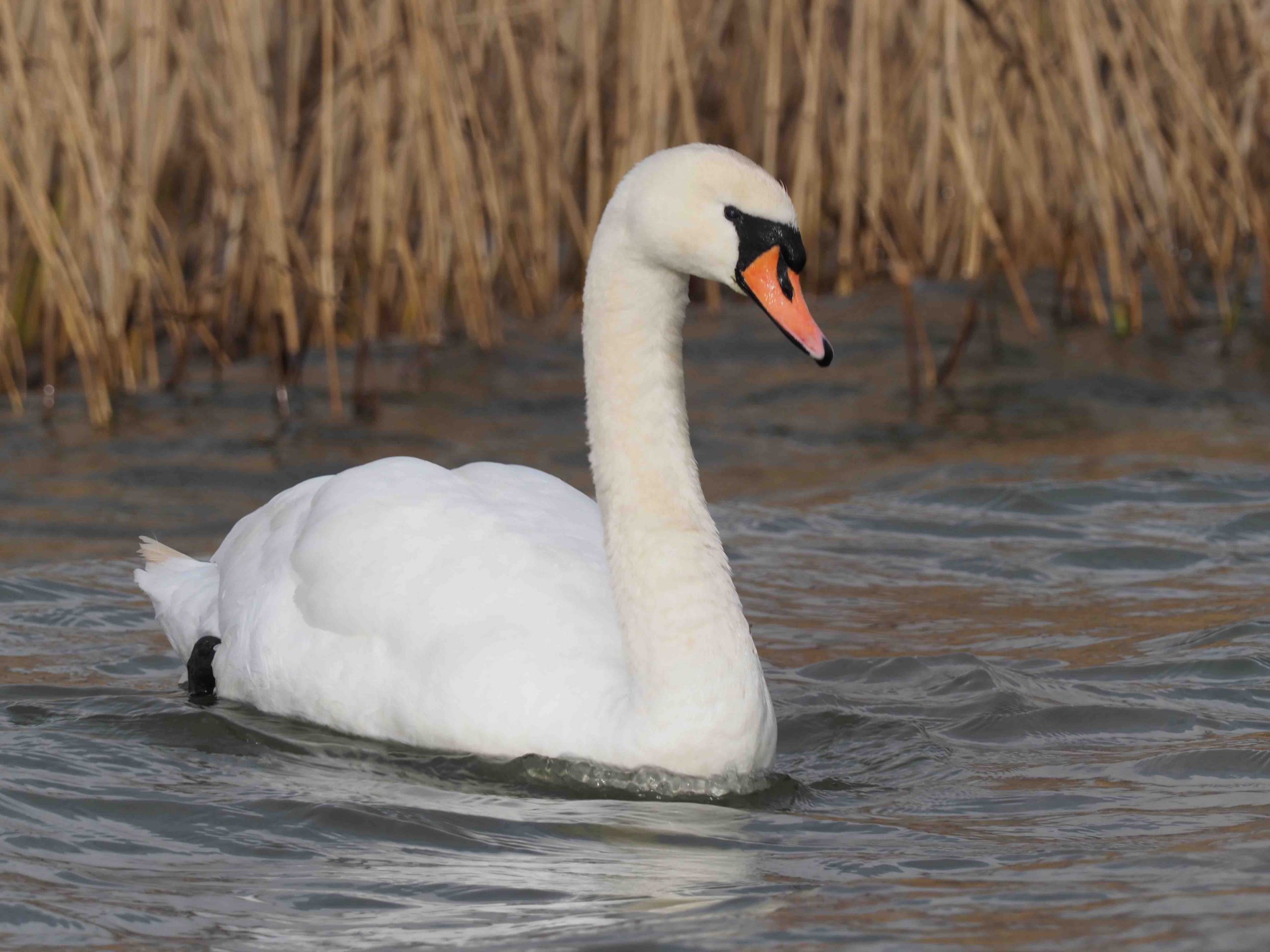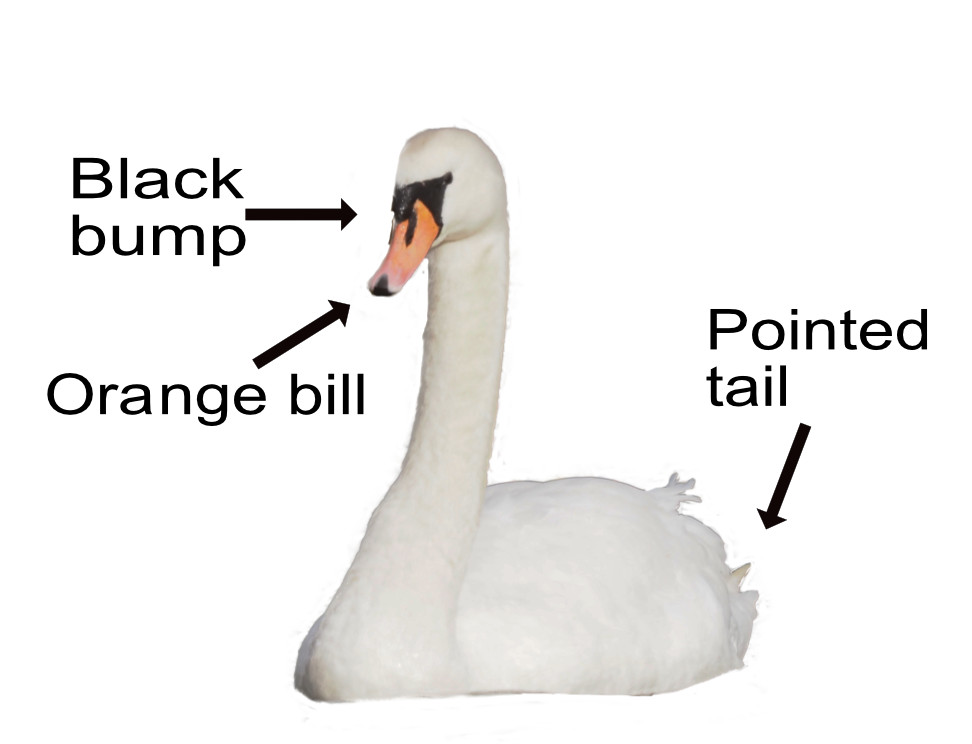
The Mute Swan is one of our largest birds and has been protected by royal decree since 1387, which is why they always look so regal. Mute Swans have been around for a long time with fossils found in East Anglia dating back 6,000 years. They only hiss when they are not amused (like Queen Victoria), otherwise they are silent and hence the name 'mute'.
The Mute Swan is all white with an orange bill that has a prominent black bump at the base. They have an S-shaped neck, downward tilted head, and a pointed tail which is more obvious when they are upended (other swan's tails, like the Whooper, are not so pointed). Their wings give a distinctive whistle in flight. Mute Swans can take off or land on the ground but need a good amount of clear space to get airborne, which is why they more often take off and land on water. The young, ugly duckling, cygnets are a browny grey and only become fully white after a year.
They mainly feed during the day in shallow water, slow rivers, canals, or brackish (salty) water. Their major food is aquatic plants and other riverside vegetation. With their long necks, they can reach a metre below water to get to the plants the other ducks can't reach. They will also eat insects and snails.

Mute Swans start breeding after 3-4 years. The female swan is known as a 'pen' and the male is a 'cob'. They often pair for life. Both birds help make the large 4 metre wide nest which is constructed from rushes and reeds on a bank or island. The pen lays 5-8 eggs which hatch after 36 days. Both parents are involved in bringing up the kids. Dad will guard the nest while mum leaves to feed, but only mum incubates the eggs. They are very territorial while nesting, so keep away if you don't want to be hissed at or pecked! Despite being big, it is a complete fib that a swan can break your arm. Both parents are devoted to their young cygnets who can swim soon after hatching. They give them rides on their backs to protect them from pike and other predators - and because it looks cute. The youngsters can eventually fly after 120-150 days and may stay with mum and dad for their first winter.
The Mute Swan is generally resident, though some move short distances in winter flocks. There are 75,000 in Britain. In the past, swans have suffered lead poisoning from fishing weights, but these are now banned and numbers are recovering. Their Latin name is 'cygnus olor' where both 'cygnus' and 'olor' mean 'swan' just in case you didn't get the royal message.